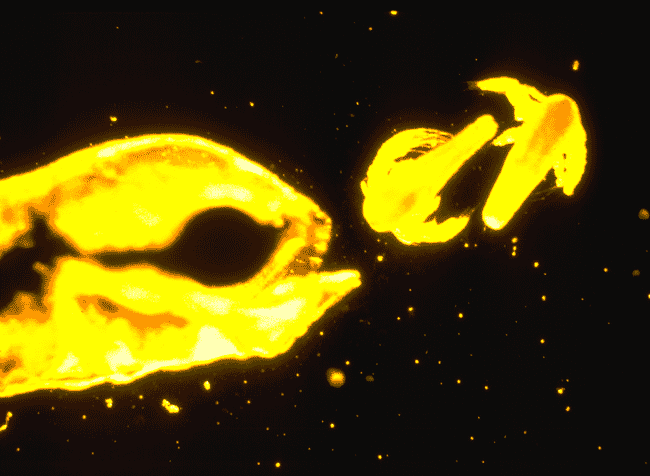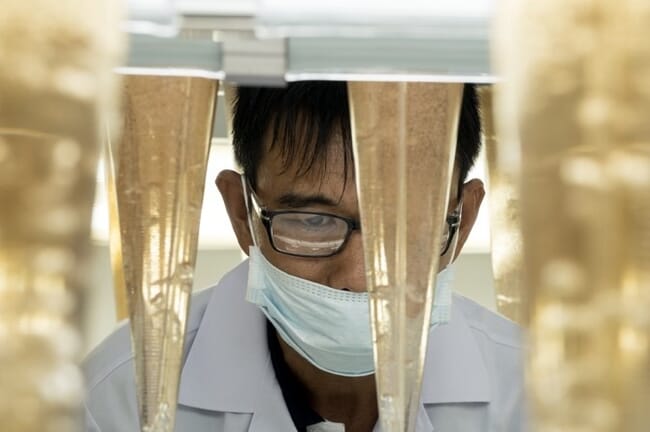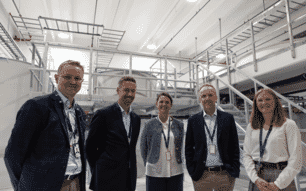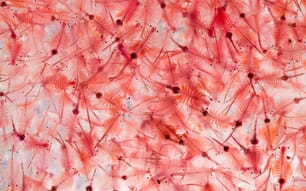“If we’re still working at replacing Artemia in diets, it means that we aren’t there yet,” said Philippe Léger, the former MD of INVE Aquaculture, at an event in which INVE and Ghent University presented the fruits of their long collaborative research projects to The Fish Site. “But I think we’re very close.”

At a Q&A session, experts from Ghent University and INVE Aquaculture (Benchmark’s Advanced Nutrition division) discussed the development of the use of Artemia. Prof Patrick Sorgeloos, who is one of world’s preeminent Artemia researchers, noted that as early as 1976 – the year after he finished his PhD studies on these brine shrimp at Ghent – FAO, at their first Technical Conference on Aquaculture in Kyoto (Japan), were questioning whether Artemia had a future in aquafeeds. Thankfully for Sorgeloos, his doctoral studies didn’t go to waste: over 40 years later, although other options are now being developed, it is clear that Artemia are still the gold standard of hatchery feeds for numerous shrimp and marine finfish species.
Philippe Léger explained that Artemia have a proven track record and have underpinned the expansion of the marine fish and shrimp industry. In his view, at present date, Artemia are essential to ensuring good survival, development and growth, from hatchery to grow-out, for numerous commonly farmed aquatic species. But the future trajectory of the brine shrimp sector is more debatable.
“I do think Artemia will remain crucial and absolutely applicable to the industry in the coming decades,” said Athene Blakeman, managing director of Benchmark Advanced Nutrition. “I don’t see it going anywhere,” she continued, “it’s still going to be the optimal nutrition.”
However, she conceded that replacements for Artemia are gaining traction. Using Artemia can be complex and some hatcheries don’t want to use them due to ethical sourcing concerns. There is also evidence that existing supplies of brine shrimp cysts – which are currently at about 3,000 to 4,000 tonnes a year – cannot support the rapid expansion of the aquaculture sector. The industry needs to find a way to meet these challenges.
Identifying and adopting viable replacements
Sorgeloos explained that researchers, hatchery operators and the feed industry have been working, step by step, to reduce or replace the Artemia in live feed. Hatcheries used to need 25kg of cysts to produce 1 million post-larval shrimp, but can now produce the same quantity with only 1.5-3kg.
According to Léger, the ideal result would be to develop a high-performance off-the-shelf micro-diet that can replace brine shrimp without affecting production outcomes. This hasn’t been perfected yet – and Léger doesn’t think that the currently available commercial diets are close enough replacing 100 percent Artemia or live feed outright.

Blakeman added that Benchmark and other aquaculture nutrition companies like INVE are currently working to replace Artemia in the hatchery cycle. The replacement trials have been promising – she reported that in certain conditions it is possible to completely replace Artemia in the life cycle without observing any negative impacts on survival and yield. The next step will be achieving these results consistently and finding ways to make alternative early-stage feeds more user-friendly.
Who will adopt the new replacement live feeds?
Blakeman predicts that the alternative feeds won’t completely disrupt the existing market for Artemia – their use is deeply entrenched. Instead, the alternatives will be used in certain market segments. Some hatcheries will replace Artemia completely, while other producers will progressively adopt the replacements, reducing the amount of Artemia that goes into their feed. Other producers will continue to rely on Artemia.
Sorgeloos agreed, saying that although Artemia are an excellent starter feed, the regional differences in Artemia’s quality and environmental footprint make alternatives enticing. He warned that some sources of Artemia could be overexploited or disappear in the coming years.
Brine shrimp have been easy to collect, process and market for decades – the industry won’t be able to maintain this production strategy. As hatcheries progressively adopt alternative live feeds, Artemia producers should try to improve their practices. Sorgeloos stressed the need for supply chain stewardship in Artemia production. This will improve the quality and overall sustainability of the sector and ensure that brine shrimp Artemia remain a key component of aquaculture nutrition.




